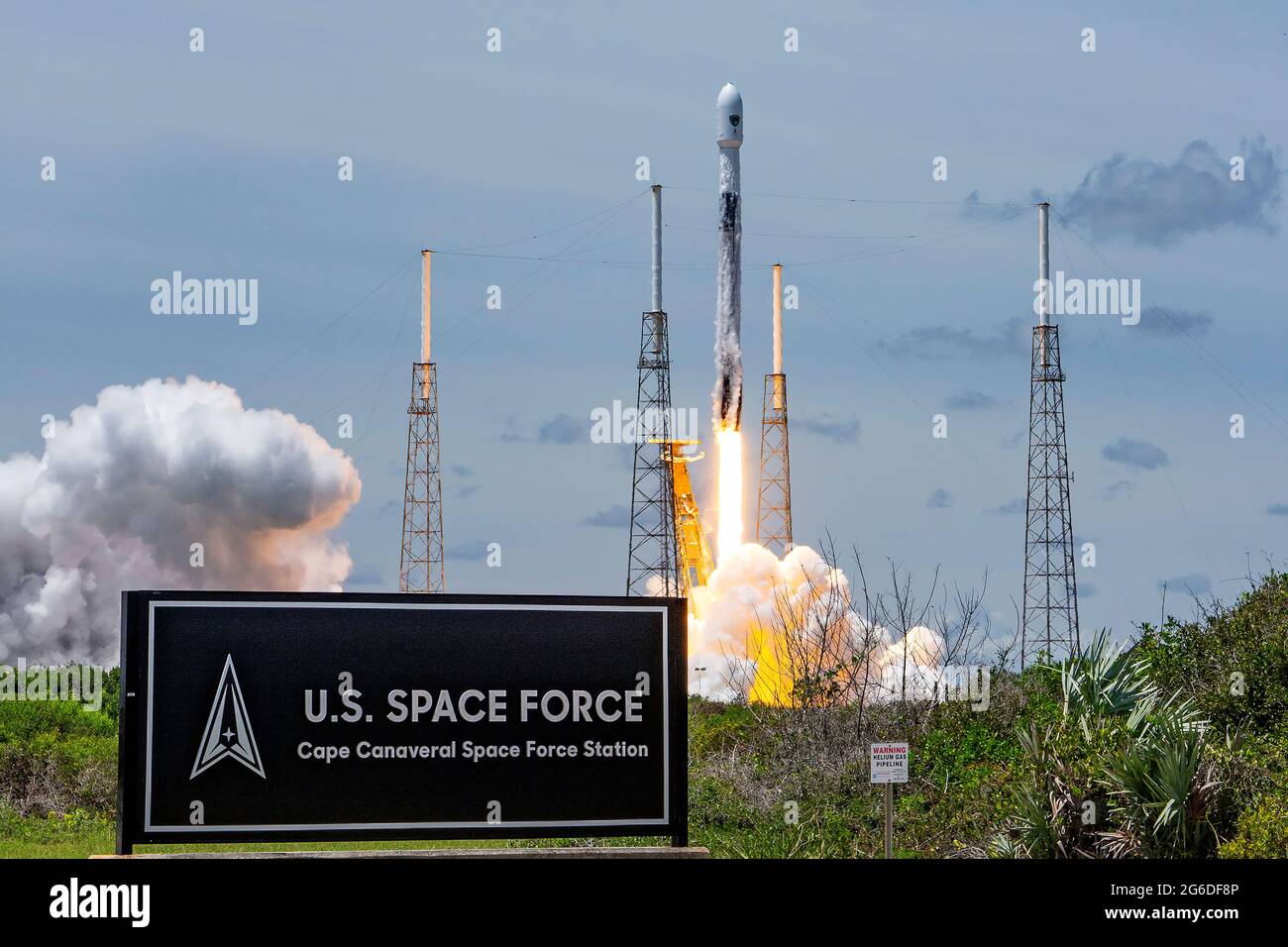A Falcon 9 rocket carrying a GPS III-5 satellite into orbit launches from LC-40 at Cape Canaveral Space Force Station, Fla., June 17, 2021. The GPS III satellites have signals three times more accurate than the current generation of satellites and eight times the jamming resistance.

Image details
Contributor:
American Photo Archive / Alamy Stock PhotoImage ID:
2G6DF8PFile size:
68.7 MB (2.8 MB Compressed download)Releases:
Model - no | Property - noDo I need a release?Dimensions:
6000 x 4000 px | 50.8 x 33.9 cm | 20 x 13.3 inches | 300dpiDate taken:
17 June 2020More information:
This image is a public domain image, which means either that copyright has expired in the image or the copyright holder has waived their copyright. Alamy charges you a fee for access to the high resolution copy of the image.
This image could have imperfections as it’s either historical or reportage.
The United States Space Force (USSF) is the space service branch of the U.S. Armed Forces, one of the eight U.S. uniformed services, and the world's first and currently only independent space force. Along with its sister-branch, the U.S. Air Force, the Space Force is part of the Department of the Air Force, one of the three civilian-led military departments within the Department of Defense. The Space Force, through the Department of the Air Force, is overseen by the secretary of the Air Force, a civilian political appointee who reports to the secretary of defense, and is appointed by the president with Senate confirmation.[8] The military head of the Space Force is the chief of space operations who is the most senior Space Force officer unless a Space Force officer is serving as either the chairman or vice-chairman of the Joint Chiefs of Staff. The chief of space operations exercises supervision over the Space Force's units and serves as one of the Joint Chiefs of Staff. The Space Force is the smallest U.S. armed service, consisting of 4, 840 personnel and operating 77 spacecraft. Major spacecraft and systems include the Global Positioning System constellation, military satellite communications constellations, Boeing X-37B spaceplane, U.S. missile warning system, U.S. space surveillance network, and the Satellite Control Network. Under the Goldwater–Nichols Act, the Space Force is responsible for organizing, training, and equipping space forces, which are then presented to the unified combatant commands, predominantly to United States Space Command, for operational employment. The U.S. Space Force traces its roots to the beginning of the Cold War, with the first Army Air Forces space programs starting in 1945. In 1954, the Western Development Division, under General Bernard Schriever, was established as the first dedicated space organization within the U.S. Armed Forces[9][10] and continues to exist as the Space Force's Space and Missile Systems Center.